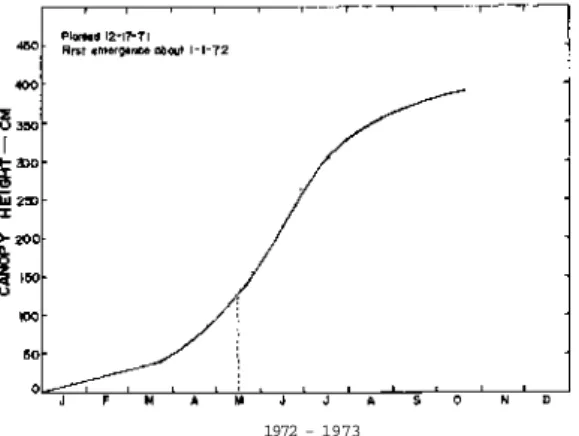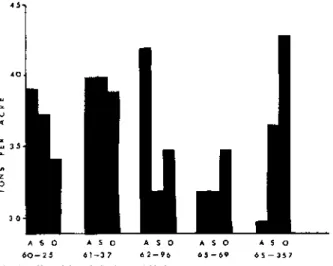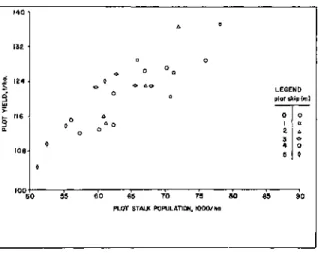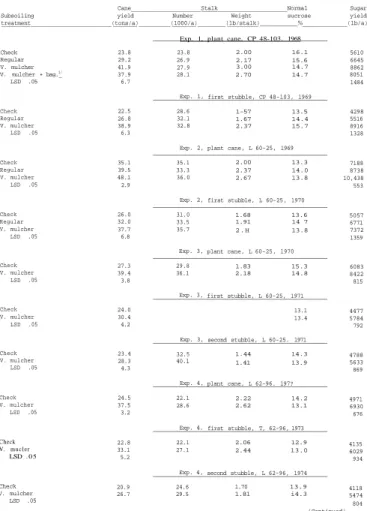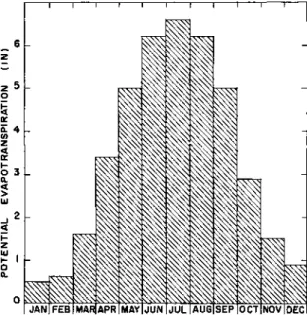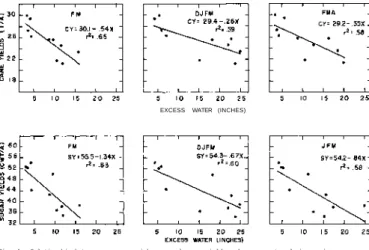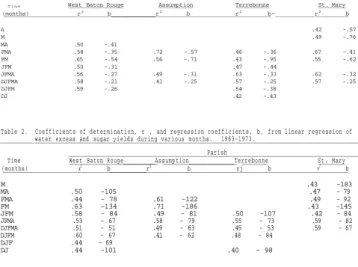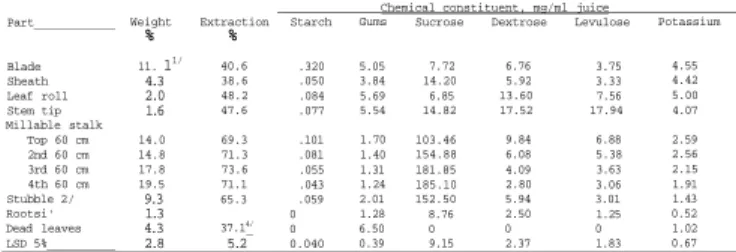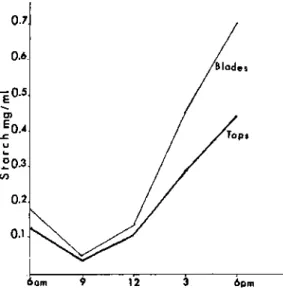Hugh P. Garrison Aerated steam - Another method of controlling stunted growth disease of sugarcane - R. A comparison of the sexual attractiveness, fecundity and fecundity of laboratory-reared and wild adult sugarcane borers - J. Herbicides for and postemergence in sugarcane in Louisiana - Ernest R. Stamper Control of browntop panic in sugarcane - R. The sensitivity of Florida sugarcane rats to diphacinone - Richard C. Production Section Chairman: Carlos Alonso Papers presented:. Jacobsz Rosier Bagasse Predrying Using Flue Gases - J. The Impact of Waste Fuel Drying on Boiler Operation, Including Future Boiler Design - William P. Different Approaches to Meeting Steam Requirements in a Sugar Factory - Blas M. Compromised Boiling System with high test production of raw sugar - Carlos R. Capacity determination of continuous centrifugals by purity method - Peter Schubert Control of particulate emissions with a wet scrubber - William D. Arlington Bagasse boiler cleaning - A. Some aspects of industrial water pollution - Robert C. However, were sugar cane yields per hectare are significantly lower than those of sugar cane of the same variety planted in the fall.
Nineteen percent of the clones in the progeny were outside the range of the parental clones. Overall plot yields for the 1-, 2-, and 3-m skip treatments were similar to yields from the control treatment (Table 1. Compaction was lowest in the area of the underlying furrow and increased progressively toward the center.
Sucrose was detectable in all parts, but was most abundant in the lower half of the stem. The highest concentrations of sucrose were found in straw pieces, comparable to the low 75% of milling stalks. While the overall increase in recoverable sugar/ton was 6.7%, the increase in recoverable sugar/A was only 4.8%.
Before use, it is mounted on another bracket attached to the mounting bumper at the rear of the truck.
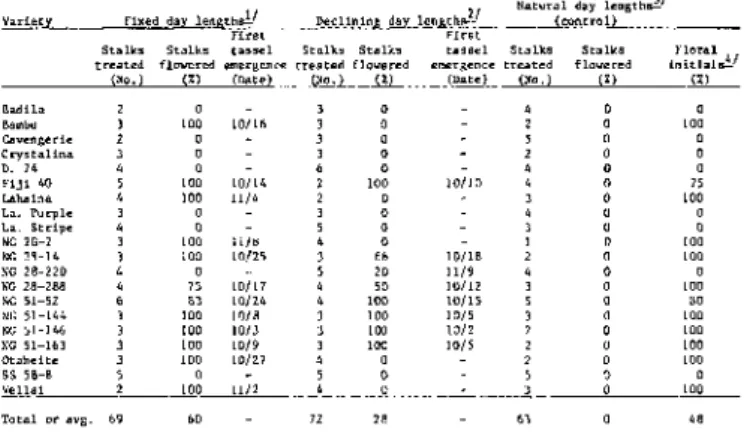
SACCHARIMETER )
Koike USDA, ARS
The stems were ground separately and various dilutions of the crude juice were tested for infectivity on sugarcane clone CP 44-101. The objectives of the reported studies were to find the best combination of AS temperature and time for best germination and RSD control (cane treated with adherent waste), as well as varietal tolerance and effects of pre-treatment storage on germination. Symptoms of young and mature nodes were used to identify RSD in four-month-old plants grown in the greenhouse.
The same larger commercial furnace was used for six weeks in a process of treating four varieties at 51 C-four hours (cane with trash) in the fall of 1975. COMPARISON OF SEX ATTRACTIVENESS, FERTILITY, AND FERTILITY OF LABORATORY-GROWN AND WILD-GROWN SUGAR CANE. A second test was done in the laboratory to determine the fecundity and fecundity of laboratory-bred (L) and wild (W) cane borers.
As the eggs in the carton began to hatch, any moths still alive were removed and placed in separate cartons to complete oviposition. In summary, I found no difference among females in sexual attractiveness or fecundity between laboratory-reared and wild populations, but laboratory-reared males were less fertile than wild males. Comparison of the female pheromones from a wild and a laboratory strain of Cadra cautella and the male response to the pheromone extracts.
Only four of the preemergence chemicals are generally used; the other four chemicals are used in specific areas of the sugar cane belt. The pre- and post-emergence herbicides are generally used throughout the Louisiana sugar cane industry, but have little or no use in other sugar cane growing areas of the world. Dalapon is the only post-emergence herbicide listed in the 1976 general recommendations, but Asulox is suggested for use in a supplemental recommendation prepared after the general recommendations were written.
Treflan is used to control scab and to some extent in cotton growing areas on sugarcane. Three new chemical herbicide candidates have been tested and evaluated over the past few years. All three chemicals are in the process of being registered and labeled for use in sugarcane.
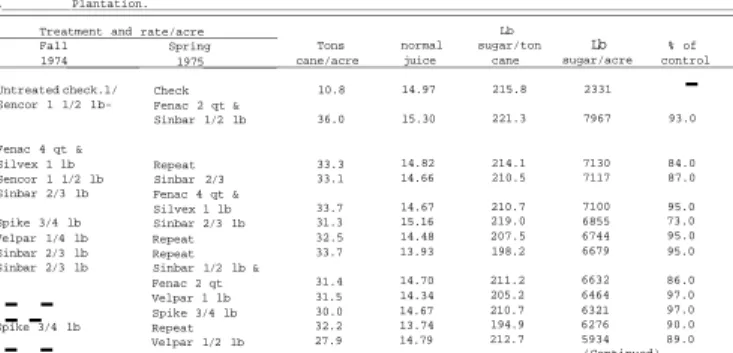
1/2 lb Repeat
- Sencor, Lexon, Velpar, Spike, and Slnbar a l l wettable or water soluble powders and were used as commercial formulations and not active ingredients
The soil on top of the bed is essentially uncultivated and packed hard into the ratoon crops. 3, is stored in the bagasse house from which two payloaders also supply the slat carrier well, B.C. We were very concerned about possible air leaks in the system, especially at the bagasse discharge inlet.
Perhaps this fact contributed significantly to the relatively low steam requirement of the boiling house. The process is complex and, to obtain maximum efficiency from the unit, the following must be considered: a properly sized scrubber must be selected according to boiler steam production rate and the volumetric flow rate of the existing gases; correct operating conditions must be maintained, i.e. the level of the abrasive fluid, adequate flushing water flow and the correct pressure drop are direct functions of the success of the system; and the unit must receive regular maintenance, ie. replacement of worn parts and cleaning of all functional areas. For the washing of the sugars in the centrifugals (with the necessary compromise between quality of sugar and purity and amount of washing), we cannot rely on human determination.
In the flow sheet of the system (Fig. 1) we show the modus operandi of the system. In fact, in the case of the factory with refinery, the consumption of steam is ps/ton cane milled. In the cases of the plantation bleaching factories, the steam consumption is 950-1000 ps/ton.
In the first ratoon culture (1975) the plant population was significantly lower for the undrained control area than for each drained treatment (Table 2. In nature, plant growth is controlled by the environment and the genetic makeup of the plant. Water Rates of prime movers depend on their efficiency and on live and exhaust steam conditions.
Preparation of the graphic material is demonstrated in the following calculations using basic data typical of Louisiana conditions. 7 therefore graphically represents the live steam balance and the exhaust steam balance as a function of the live steam pressure and evaporator scheme. The steam available from bagasse is directly proportional to the true (cane) fiber in bagasse and the pol in bagasse—the field soil (ash) is incombustible.
John Seip of the Audubon Sugar Factory, Louisiana State University, for their assistance in the preparation of this article. It is proportional to the logarithm of the percentage of remaining available soil water (AW).

CANOPY HEIGHT-CM
Samples were taken from sandy and heavy clay soils sown with hot air treated and untreated seed pieces. Many ungerminated seed pieces showed a black discoloration and disintegration of the central core; others displayed a red to reddish brown internal spot. Internal staining of ungerminated seed pieces suggested that fungal pathogens were involved.
Pineapple blight (Ceratocystis paradoxa (Dade) C. Moreau) occasionally occurred in seed pieces planted in winter in poorly drained soils (6). The black discoloration and disintegration of the central core in most ungerminated seed pieces indicated the involvement of C. Date of planting, soil type, whether hot air treated or untreated seed pieces, total number of seed pieces collected at each location, and the dates of collection are shown in Table 1.
Ten single-node seed pieces of CP 65-357 were also planted in the sandy loam and heavy clay soil in pots. Sugarcane cultivars, with or without heat treatment of seed canes, date of planting, soil types, number of ungerminated seeds collected, date of collection and frequency of 3 seed pathogens isolated from the ungerminated seeds. The red rot pathogen was rarely isolated from the ungerminated, hot-air-treated seeds of the 3 cultivars and rarely from untreated, untreated seeds of CP 65-357 and L 62-96.
The pathogen was observed in almost half of the untreated, untreated seed pieces of CP 52-68 collected from heavy clay soils. Seventy percent and 35% of one-node seed pieces planted in sandy loam and heavy clay soil did not germinate within 6 weeks in the greenhouse. Ceratocystis paradoxa occurred most frequently in the ungerminated seed pieces of the 3 cultivars and in soils.
This pathogen was especially common in ungerminated, hot air-treated seed pieces and in sandy loam soil, while C. The severity of pineapple disease in planted seed pieces is strongly influenced by soil and weather conditions that delay bud or bud germination. growth of young shoots (6. When seed pieces are planted in late August or early September in soils with low moisture content, the germination of the buds is delayed and the growth of young shoots is retarded.
